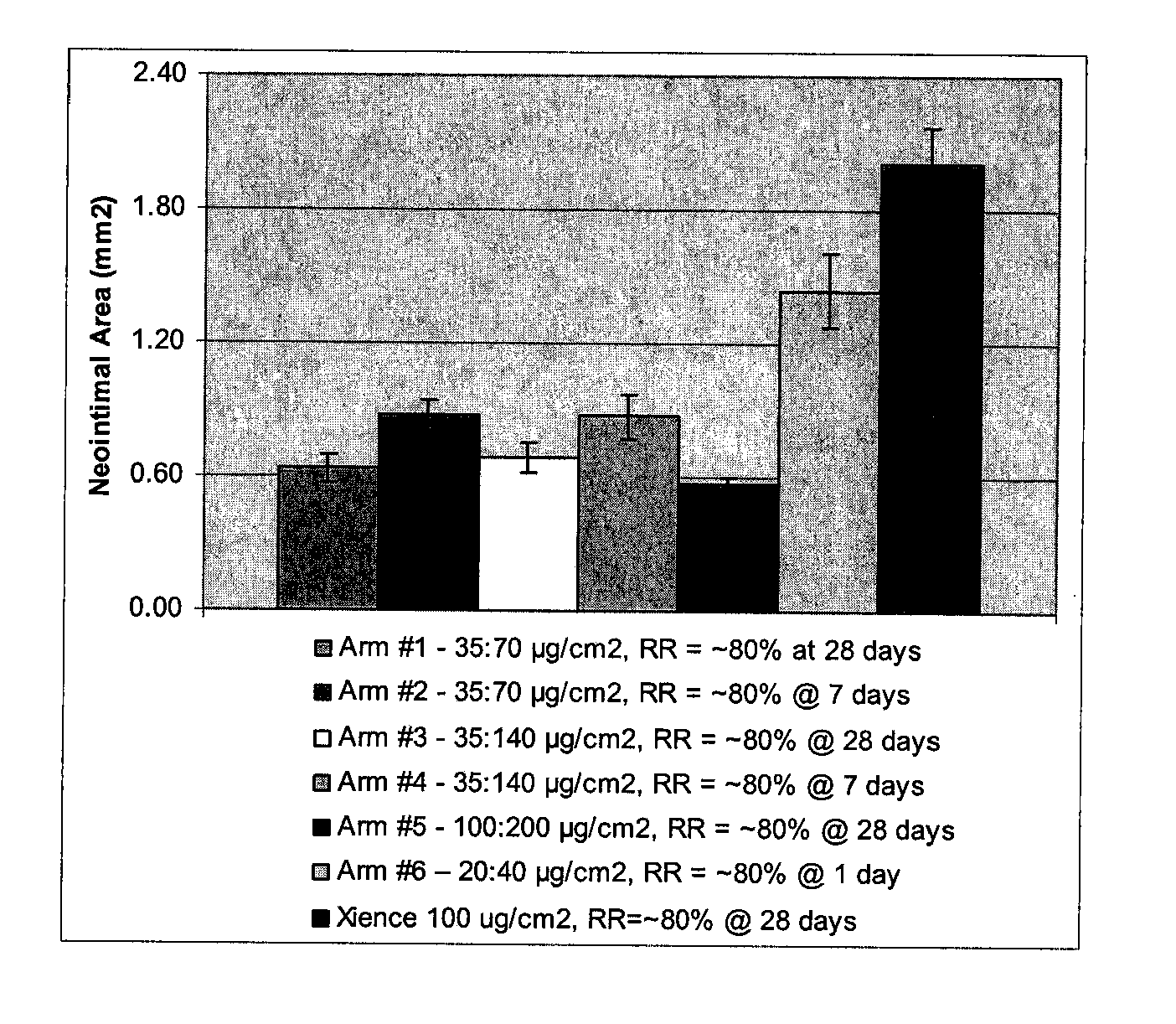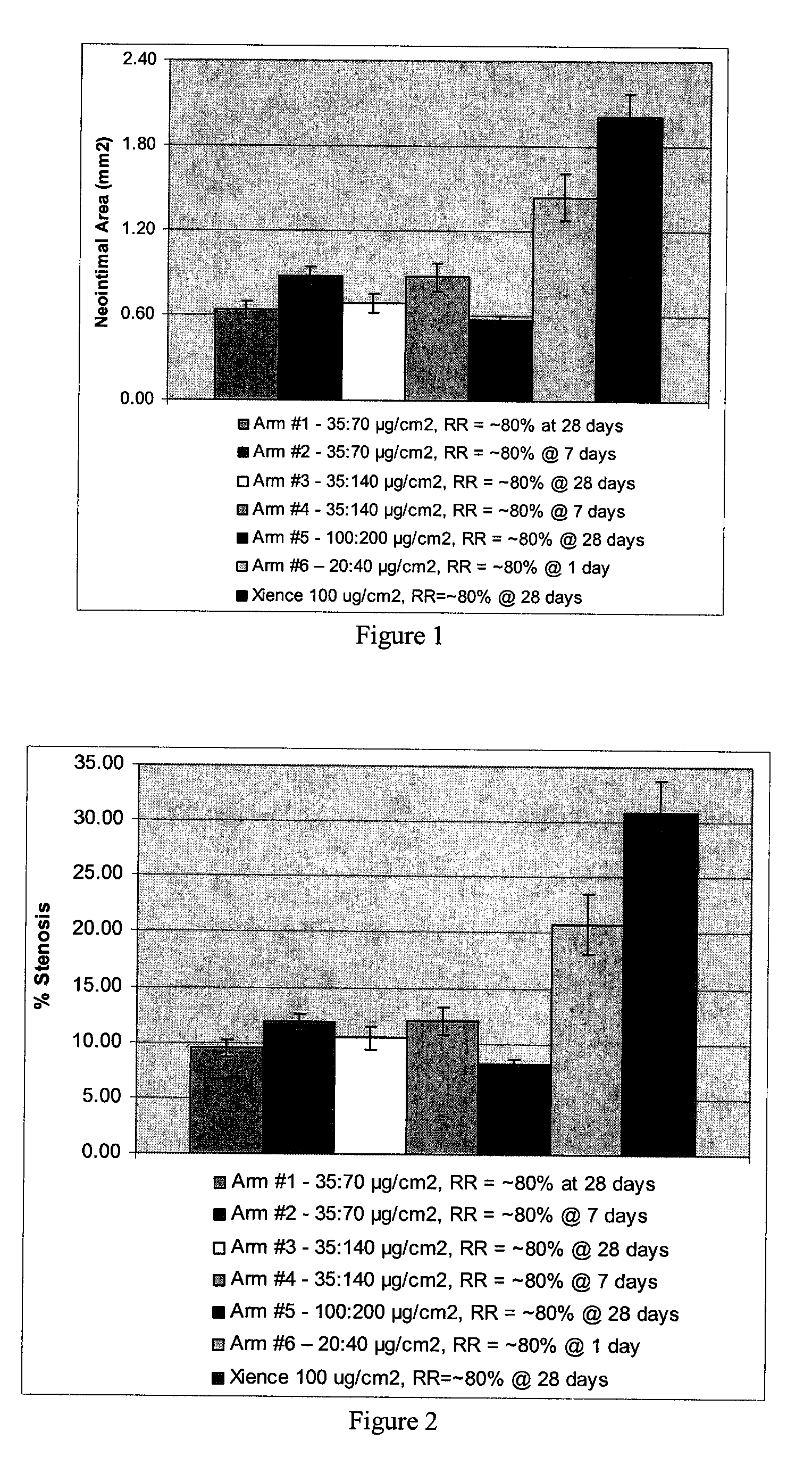Biosoluble coating comprising Anti-proliferative and Anti-inflammatory agent combination for treatment of vascular disorders
a technology of vascular disorders and biosoluble coatings, which is applied in the field of drug combinations, can solve the problems of occlusion of blood conduits, collapse of intimal flaps or tom arterial linings, and few challenges in the art of drug delivery stents, and achieves less neointima thickness and better healing
- Summary
- Abstract
- Description
- Claims
- Application Information
AI Technical Summary
Benefits of technology
Problems solved by technology
Method used
Image
Examples
examples
[0052]Biosoluble PLGA-PEG-PLGA polymer with various PEG content (%) is used to form exemplary coatings on 3×12 mm Vision Stents (available from Abbott Vascular, Santa Clara, Calif.) according to established procedures. The polymer is used for the primer layer as well as the drug reservoir layer. The drug reservoir layer also includes everolimus (Ever) and dexamethasone acetate (Dex). The drug to polymer ratio is D:P=1:3 (everolimus, 50 μg / cm2; dexamethasone acetate, 100 μg / cm2). Scanning electron microscope (SEM) studies show all these coatings have good mechanical properties (SEM images not shown). Total content (TC) and release rate (RR) of drugs from studies on these coatings in a 28 porcine model are summarized below in Table 3.
TABLE 3TC1d RRTCEverEverDex1d RRExample #n = 5(n = 3)(n = 5)Dex (n = 3)187.6 ± 2.380.7 ± 0.1N / AN / APLGA-PEG-PLGA(17% PEG)272.9 ± 1.3100%N / AN / APLGA-PEG-PLGA(22% PEG)363.1 ± 4.9100% 98.4 ± 1.0100%PLGA-PEG-PLGA(22% PEG)(D:P = 1:3 total)285.9 ± 1.5100%101.3 ± ...
PUM
 Login to View More
Login to View More Abstract
Description
Claims
Application Information
 Login to View More
Login to View More - R&D
- Intellectual Property
- Life Sciences
- Materials
- Tech Scout
- Unparalleled Data Quality
- Higher Quality Content
- 60% Fewer Hallucinations
Browse by: Latest US Patents, China's latest patents, Technical Efficacy Thesaurus, Application Domain, Technology Topic, Popular Technical Reports.
© 2025 PatSnap. All rights reserved.Legal|Privacy policy|Modern Slavery Act Transparency Statement|Sitemap|About US| Contact US: help@patsnap.com


